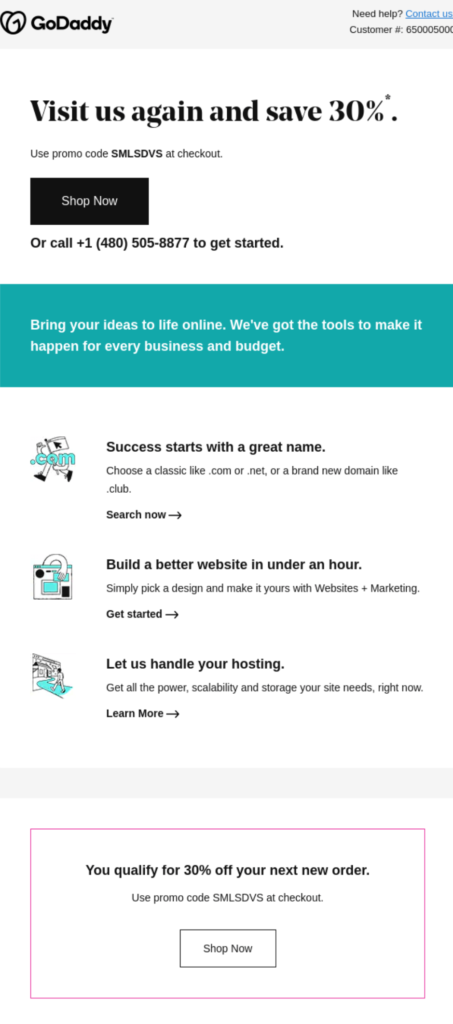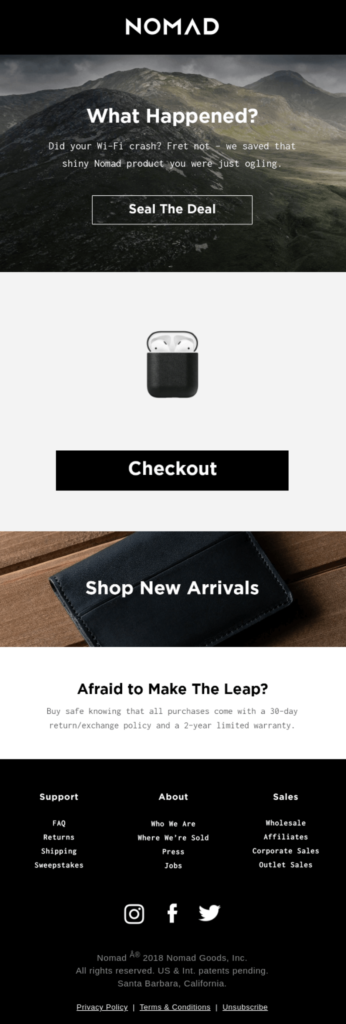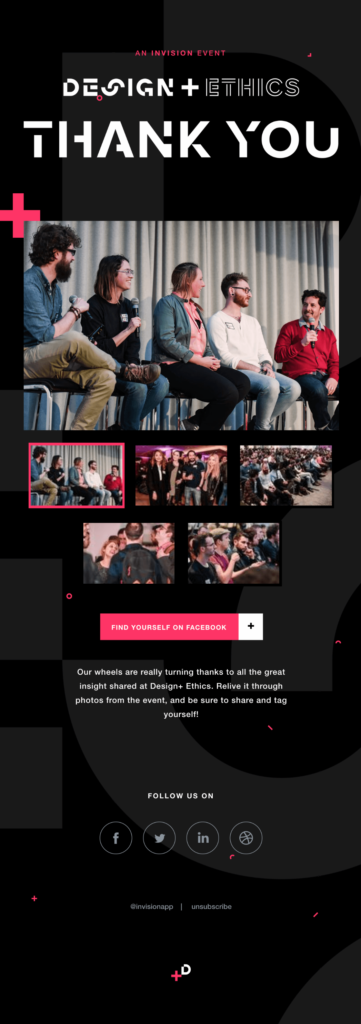In today’s constantly evolving digital landscape, businesses always seek creative and effective strategies to engage and connect with their target audiences. With the right email strategy, you can deliver highly personalised and engaging content to each consumer’s inbox. Studies have shown that approximately 59% of consumers say marketing emails influence purchasing decisions.
In this article, we will explore various email marketing strategies and discuss various examples. We will also discuss the importance of racking the success of your email marketing campaign strategy using metrics such as engagement and conversions. By implementing these proven marketing strategies and leveraging crucial insights, your business can drive long-term success with precision and efficiency.
What is an email marketing strategy?
An email marketing strategy clearly outlines how your organisation can utilise email communication to achieve short-term and long-term marketing objectives.
This process usually involves strategic tasks such as target audience segmentation, automation, and content creation. By understanding different consumer segments’ specific requirements and preferences, your business can customise content to resonate with each reader. This can significantly increase conversion rates and overall engagement.
Timing is also an extremely crucial aspect of effective email marketing. Sending your emails at the right time ensures they receive an optimum amount of readership and attention. Your business can leverage automation tools to schedule promotional emails at preferred times.
Examples of email marketing strategies:
1. Re-engage inactive subscribers
Re-activating inactive subscribers is vital for maintaining a healthy customer base. By sending targeted re-engagement emails, your business can convince inactive or dormant consumers to re-establish their interest, engagement, and relationships with your brand. This could be exclusive reader discounts, providing valuable thought leadership content, or asking for consumer feedback. These types of emails can effectively convert inactive subscribers into loyal customers.
A key example of this strategy can be seen in this email. The subject line ‘Visit us again and save 30%.,’ immediately grabs the attention of inactive readers. It acknowledges their absence while convincing them to purchase again by offering an exclusive discount.

2. Set up trigger-based emails
Trigger-based emails are automated emails triggered by pre-determined consumer actions. These could include cart abandonment reminders, birthday discounts, or welcome emails. This email marketing strategy allows businesses to send personalised messages at crucial moments to build trustworthy customer relationships and increase conversions. They are highly effective ways to enhance customer experiences and improve engagement.
This abandoned cart email guides encourages consumers to complete their purchase but also effectively addresses any obstacles they may face by highlighting their return and warranty policy.

3. Hyper-personalise your emails
Research has shown that 80% of consumers are more likely to purchase from a business if they engage with them using personalised advertising or messaging. Your business can leverage historical data insights and demographic information to create relevant emails to consumers. This may include product recommendations, customised discounts, and offers. This email marketing strategy can help build trust and accelerate lead conversions.
This email showcases the effectiveness of personalisation by including innovative content that dynamically updates based on each subscriber’s location and weather conditions. This real-time customisation adds a sense of connection, urgency, and relevance to the company’s message, making it even more appealing to prospective customers.

4. Lead-nurture email series
A lead-nurture series is a strategic sequence of messages created to guide consumers through each buyer journey stage. This involves designing informative and helpful content over time, educating potential consumers about your offerings’ various features and benefits, and helping them make informed purchase decisions. This email marketing strategy can help present your business as an industry leader and an informative point of contact.
This email is the perfect example of a lead-nurture series that follows up with event attendees to continue the conversation. After the initial interaction, this email establishes a positive connection with readers by reiterating the brand’s appreciation for their participation and engagement. The email also includes numerous photos of the event, which help offer a visual reminder of the experience. This email is a highly effective way for the organisation to re-engage attendees and nurture their interest.
The ‘Find Yourself On Facebook’ helps the subscriber feel included in the brand’s message and mission and is a practical way to redirect viewers to their social media channels. This can help nurture prospective leads and increase the likelihood of conversion.

5. Reward your loyal customers
The success rate of selling products to a loyal customer is up to 70%, while the success rate of converting a prospective lead is up to 20%. Therefore, building loyal customers can be extremely valuable for helping businesses drive revenue. You can reward and incentivise loyal customers through your email marketing strategy by providing early access to new products, exclusive access to valuable content and offers, recognising and appreciating repeated purchases, and more. This strategy can be an extremely constructive way to boost customer retention rates and encourage customer advocacy and referrals.
This email demonstrates how businesses can recognise and reward loyal customers with exclusive benefits. Loyalty and reward programs like these can empower businesses to cultivate long-term customer relationships. This email expresses gratitude for the customer’s purchase and fosters further customer loyalty.

6. Leverage social media
Leveraging social media to amplify engagement through email marketing is quickly becoming an extremely popular way for businesses to encourage subscribers to share content through their networks. Your business can significantly expand its organic reach and attract new traffic by including buttons that enable viewers to share email content through their social media channels. Furthermore, this strategy can help expand and leverage user-generated content through social media to showcase positive feedback and proof of your value proposition.
This email showcases how businesses can easily connect their email marketing strategy with their social media presence. By sharing user-generated content of viewers wearing their products, they can showcase positive real-life customer feedback. Email marketing strategies like this are extremely effective at building authenticity and credibility.

How to track the success of your email marketing strategy:
Engagement
Tracking user engagement levels of your email marketing campaigns can help your business understand how well your content aligns with the needs and preferences of your audience. Key engagement metrics include email opens, click-through, bounce, and unsubscribe rates.
Email open rates indicate how many subscribers opened your email. This is usually dependent on how enticing your subject lines are. Click-through rates (CTR) indicate how many readers click the links within your content. This can help measure how effective your call-to-action prompts are and how relevant your content is to your target audience.
The bounce rate highlights the percentage of emails that fail to reach the recipient’s email inbox. This can be due to invalid recipient addresses or formatting errors. Unsubscribe rates measure the percentage of readers who opt out of your promotional emails. This is usually due to low engagement levels or excessive messaging, which could potentially be perceived as spam.
Conversions
While engagement metrics help you understand your content effectiveness, tracking conversions will help you understand how successful a promotional email is. A conversion is the number of readers that undergo the desired action that your email prompts. This could include completing a survey, subscribing to a service, or purchasing.
Analysing your conversion rates can help you strategically monitor the success of each campaign, identify potential areas for improvement and identify patterns in consumer behaviour in specific demographics. Vision6 can enable businesses to automatically track conversion metrics such as UTM parameters without inaccuracies or time delays.
Final thoughts
Understanding the importance of developing an effective email marketing automation strategy can help your business achieve quick yet transformative results. To transform your email marketing campaigns with performance tracking tools and email marketing strategy templates, book a free demo today to unlock the potential of Australia’s top-performing email marketing tools.



